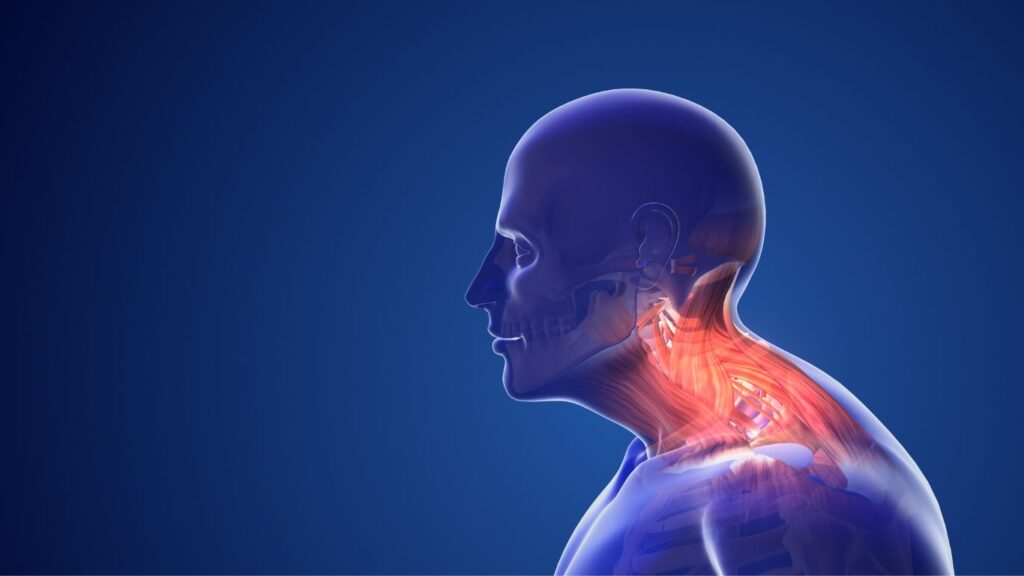A neck hump, commonly known as a “dowager’s hump” or “buffalo hump,” is a condition where excess fat or misaligned vertebrae create a noticeable bump at the base of the neck. While this hump may appear harmless, it can be a sign of underlying issues caused by poor posture over time. Fortunately, with the right preventative measures and treatments, this condition can often be reversed or managed effectively.
How Poor Posture Can Lead to a Neck Hump: Prevention and Treatment Tips
What Is a Neck Hump?
A neck hump develops when there is an abnormal curve at the top of the spine, causing the vertebrae to bend forward excessively. This condition is typically due to long periods of poor posture, particularly in today’s digital age, where many of us spend hours hunched over computers or mobile devices. While genetics or certain medical conditions can also contribute, posture-related neck humps are increasingly common due to modern lifestyles.
How Poor Posture Leads to a Neck Hump
When we slouch, our neck and upper back muscles are forced into unnatural positions, causing strain on the spine. Over time, the body tries to compensate for this misalignment, leading to structural changes in the spine and surrounding muscles. Specifically:

- Forward Head Position: As we lean forward, the head shifts out of alignment with the spine. This creates additional pressure on the upper vertebrae and can cause the spine to curve, eventually leading to a hump.
- Weakened Muscles: Poor posture weakens the neck, shoulder, and upper back muscles, reducing their ability to support the spine. This can lead to poor spinal alignment and further contribute to the development of a neck hump.
- Tension Buildup: The neck and upper back muscles may become tight and tense from prolonged poor posture, further aggravating the misalignment.
The combination of these factors can lead to the appearance of a neck hump, especially if left uncorrected over time.
Prevention Tips for Neck Hump
Prevention is key when it comes to avoiding the development of a neck hump. Here are some effective strategies:
1. Maintain Proper Posture
Good posture is your first line of defense. When standing or sitting, make sure your ears are in line with your shoulders and your back is straight. Avoid slouching or leaning forward when using a phone or computer. Regularly check your posture throughout the day, especially if you have a desk job.
2. Use Ergonomic Equipment
Set up an ergonomic workspace that encourages good posture. Ensure that your computer monitor is at eye level, so you don’t have to look down. Use a chair that supports your back properly, and keep your feet flat on the ground while sitting.
3. Take Frequent Breaks
If you spend long periods sitting or working at a desk, take short breaks every hour. Stand up, stretch, and walk around to relieve tension in your neck and back muscles. Gentle neck stretches and shoulder rolls can help reset your posture.
4. Strengthen Your Upper Back and Neck

Incorporating exercises that strengthen your neck, shoulders, and upper back can help prevent muscle imbalances that lead to poor posture. Exercises like rows, shoulder shrugs, and chin tucks can strengthen the muscles that support your spine and prevent the forward head position that contributes to neck humps.
5. Stay Active
Regular physical activity helps maintain overall muscle strength and flexibility, both of which are crucial for good posture. Activities like yoga, Pilates, and swimming can help keep your spine aligned and your muscles balanced.
Treatment Tips for Neck Hump
If a neck hump has already formed, there are steps you can take to address it. Early intervention is essential for reversing the condition.
1. Corrective Exercises
Specific exercises can help strengthen the muscles that support proper posture and relieve tension. Examples include:
- Chin Tucks: Stand or sit upright, gently tuck your chin towards your chest, and hold for a few seconds before releasing. This exercise helps realign the spine and strengthen neck muscles.
- Wall Angels: Stand with your back against a wall, arms bent at a 90-degree angle. Slowly raise and lower your arms while keeping your back and head pressed against the wall. This helps open up the chest and strengthen the back muscles.
2. Physical Therapy
If exercises alone aren’t enough, a physical therapist can help guide you through a tailored treatment plan. They may use techniques such as manual manipulation, posture training, and targeted exercises to help realign your spine and relieve the pressure causing the hump.
3. Massage and Stretching

Regular massages can relieve muscle tension, particularly in the neck and upper back area, allowing for improved posture and reducing the strain on your spine. Stretching can help increase flexibility in the affected areas and promote a better posture.
4. Maintain a Healthy Weight
Excess body weight, particularly in the upper back and neck area, can contribute to the development of a neck hump. Maintaining a healthy weight through proper diet and exercise can help prevent further fat accumulation around the neck and back.
Conclusion
A neck hump caused by poor posture can be both a cosmetic concern and a sign of underlying spinal issues. The good news is that with proper posture, regular exercise, and early intervention, it is often possible to prevent or reverse this condition. Incorporating small changes in your daily habits, such as maintaining an ergonomic workspace, taking frequent breaks, and strengthening your neck and back muscles, can go a long way in preventing a neck hump from developing. If you already notice the signs of a neck hump, don’t hesitate to seek treatment, as early intervention is key to recovery.
Also read: Neck Stretching Techniques for Flexibility and Pain Relief
